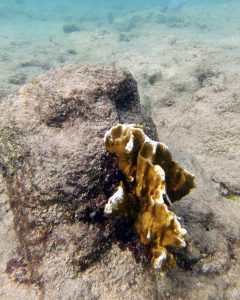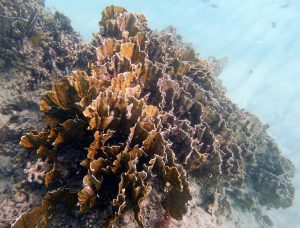
Some good news: Millepora alcicornis on Vauxhall Reef was largely unaffected by the extreme warming events in the fall of 2023
Note: I am recognizing only two species of Millepora at Vauxhaul and nearby fringing reefs: M. complanata and M. alcicornis (see Taxonomic Issues).
——————-
Tom Goreau cited the Acropora and Millepora species as the reef-building species most affected by extreme warming in the fall of 2023.
The loss of Milleporas in 2023 was perhaps unexpected, re: comments by E. Penessi, 2022 in “How does Caribbean fire coral thrive as others vanish?” (Article on science.org) she cites Peter J. Edmunds 2022 in proc. Roy Soc B: Persistence of a sessile benthic organism promoted by a morphological strategy combining sheets and trees. However in his review, Lewis 2006, p 30 describes many bleaching events affecting Millepoa species. *Biology and Ecology of the Hydrocoral Millepora on Coral Reefs in ADVANCES IN MARINE BIOLOGY VOL 50
Both the “true” coral A prolifera and the coral-like hydrozoan M. complanata occur, with the colonial zoanthid Palythoa caribeana, in the “A. prolifera Mother Colony Complex” at Vauxhall.
Both A prolifera and M. complanata were uniformly drab and covered with epiphytic growth when I viewed the colony on Jan 12, 2023, in sharp contrast to the vibrant colours of a year earlier (Palythoa caribeana was ‘normal’ in both years) :
Click on images for larger versions
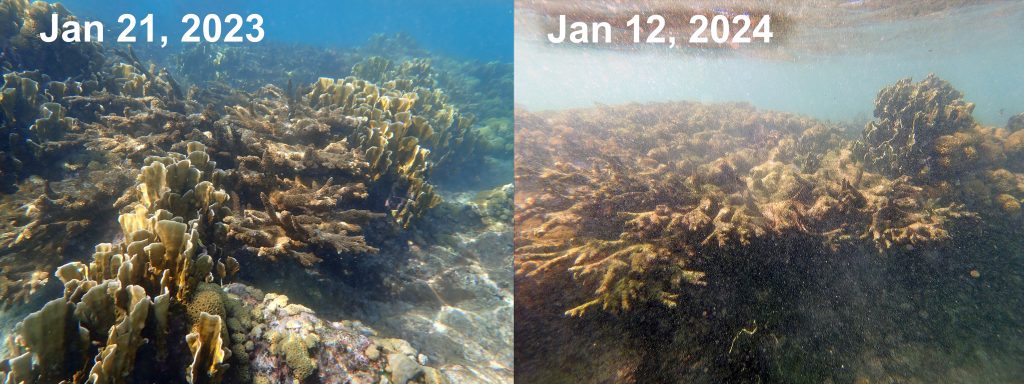
“A prolifera Mother Colony Complex” in early 2023 (left) and early 2024 (right)
They are taken from different vantage points;
the M. complanata colony at bottom left in the 2023 photo is at top right in the 2024 photo
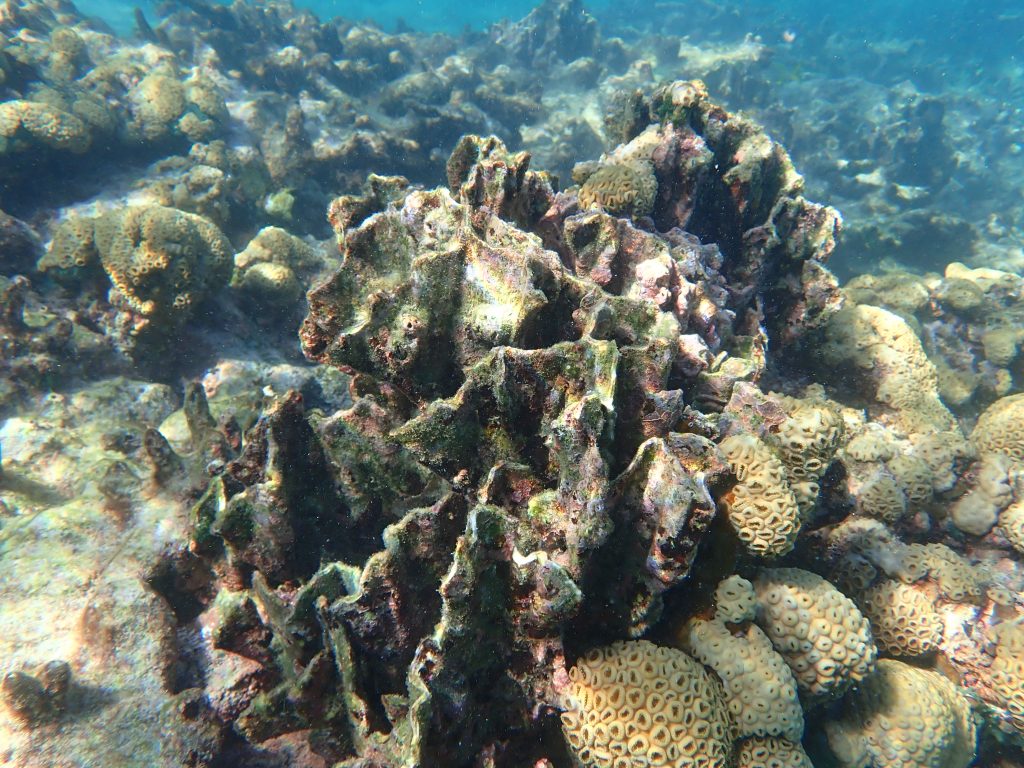
Close-up of M. complanata in the Mother Colony on Feb 22, 2024. It illustrates how quickly the blades became colonized as the warming events were likely in Oct/Nov, only 2-3 months earlier.
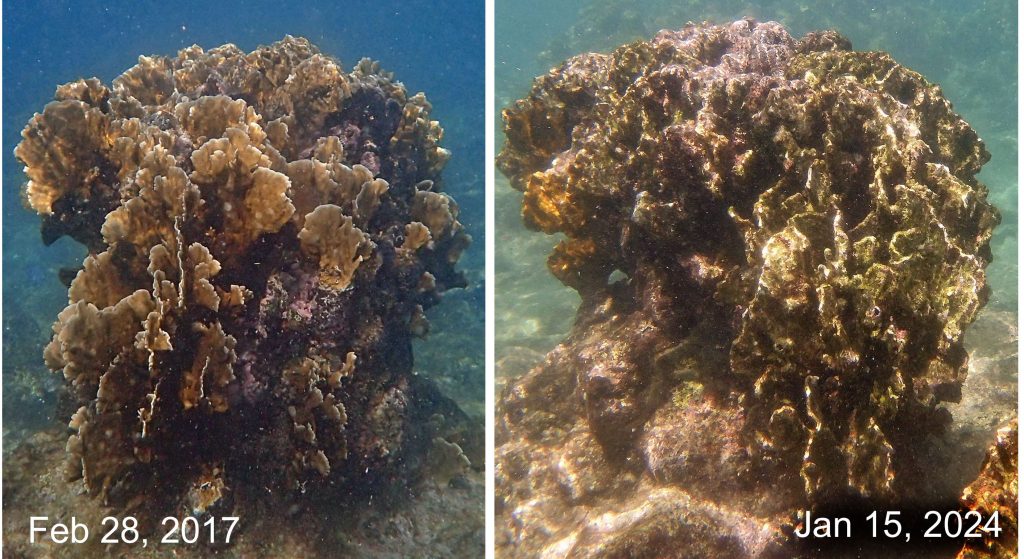
Coral head fromed by Millepora complanata in the Reef Crest zone at Vauxhall, in 2017 (mosty living) and 2024 (mostly dead). Photos from slightly different vantage points.
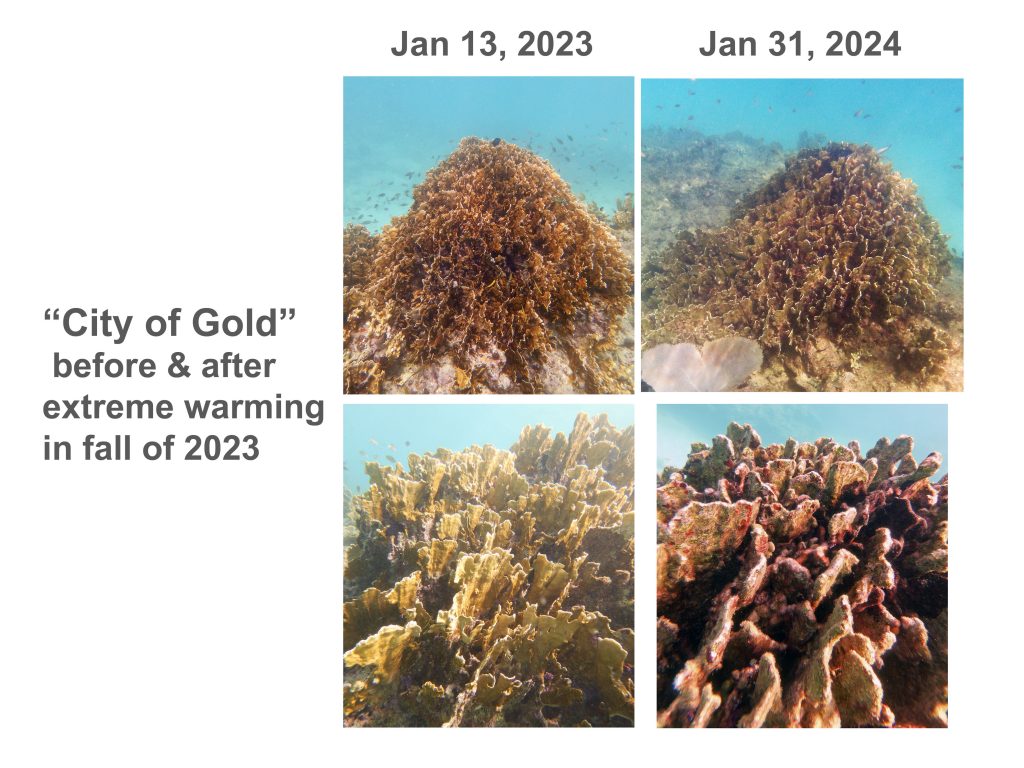
I have called these castle-like formations of M. complanata that occur in the Seaward Slope “Cities of Gold”. They tend towards a ‘squarrose form’ (but I am not convinced they are Millepora squarrosa) and the individual compartments host a wide variety of sea life. This particular example is on Reef 32 in the MPA, but they also occur on Vauxhall Reef. All of the colonies I have observed in 2024 appear mostly dead, but still hosted the same variety and abundance of sea life. The closeup photos illustrate how quickly the blades became colonized – the warming events were likely in Oct/Nov, only 2-3 months earlier.
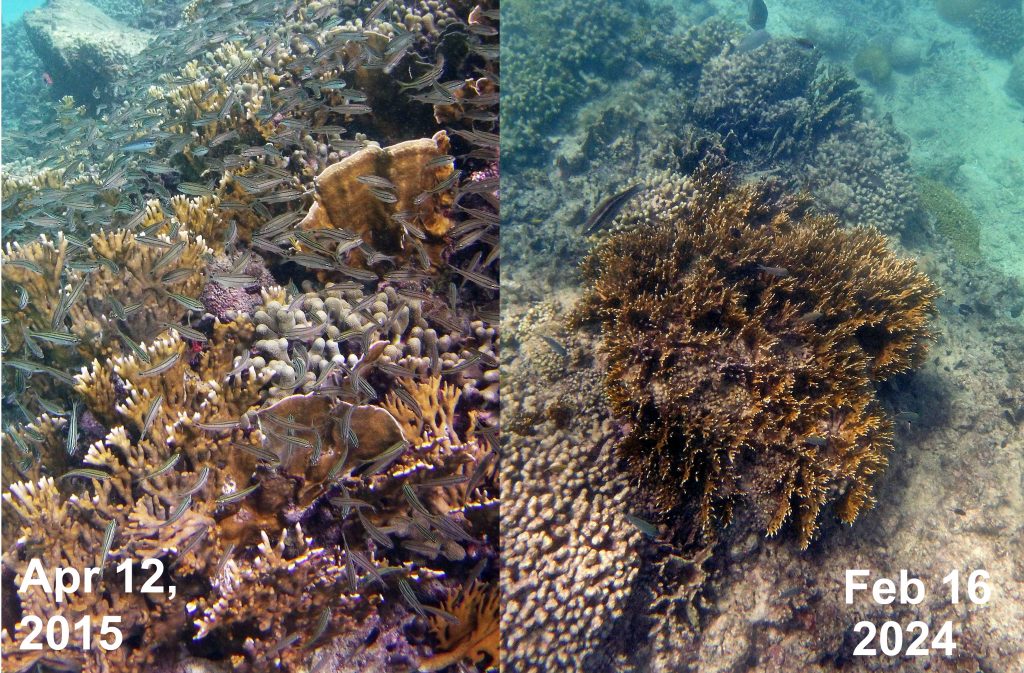
Millepora alcicornis and M. complanata on spurs, Seaward Slope Zone in 2015 and 2024. Photos are in different stands but are representative: both species healthy and common 2015…mid 2023, as at left. In early 2024: most A. alcicornis was unaffected, most M. complanata had died (re extreme warming in Oct, Nov 2023)
In regard to the Acropora species: because their distribution is limited at Vauxhall and I have a lot of photos from earlier years, I was able to make some estimates of the degree of dieback due to the 2023 warming events. It was highly variable between specimens for A. palmata (0-100%); evidently 100% for A. prolifera (no regrowth observed, at least up until March 2024), and slightly less than 100% for A. cervicornis (see this page for details).
To date in 2024, I have observed a few small specimens of Millepora complanata that appeared not have been affected; in a few – mostly on spurs close to the Reef Front – there was partial dieback. Otherwise virtually all specimens – many – I have seen look dead, but those could include specimens that aged earlier or were killed bu other factors.
On the other hand, of about 20 sites where I have viewed M. alcicornis, only at one was there any specimens that appeared to have died recently; in that case there was a much larger clump of living M. alcicornis next to it.
Update Mar 19, 2024
I am noticing more partially living M. complanata and small specimens totally living, some examples below. I dont know whether I missed them previously or they represent new growth.


